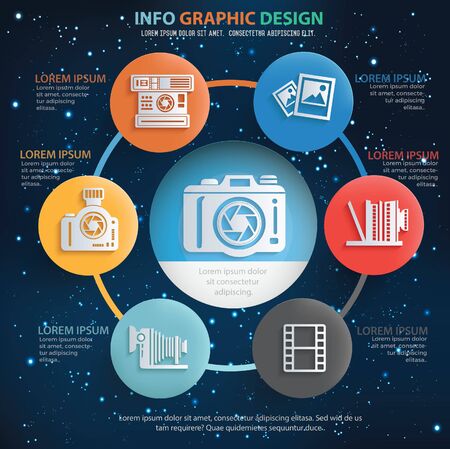Join Us To Discover Vital Digital Photography Suggestions That Will Unlock Your Camera'S Capacity-- Prepare To Record Magnificent Images Quickly!
Join Us To Discover Vital Digital Photography Suggestions That Will Unlock Your Camera'S Capacity-- Prepare To Record Magnificent Images Quickly!
Blog Article
Posted By-Barrett Dalton
When you initially pick up your cam, it can feel frustrating with all the setups and choices offered. You may find yourself wondering how to browse aperture, shutter rate, and ISO effectively. Grasping these principles is important, but there's even more to photography than simply technical knowledge. Recognizing composition methods and lighting conditions can boost your photos dramatically. So, what happens if you could find out basic approaches to enhance your skills and start catching excellent images faster than you assume? Let's explore exactly how to transform your digital photography trip.
Recognizing Video Camera Settings
Understanding your cam setups is crucial for catching magnificent photos. When you grab your electronic camera, acquaint on your own with the 3 primary setups: aperture, shutter rate, and ISO. Each plays a vital role in exactly how your images end up.
Begin with aperture, which regulates the quantity of light going into the lens. A wider aperture (reduced f-number) lets in extra light and develops an attractive history blur, excellent for pictures. On the other hand, a narrower aperture (higher f-number) keeps more of the scene in emphasis, ideal for landscapes.
Next off, Outdoor portrait near me on shutter rate. This setup establishes how long your electronic camera's sensor is revealed to light. A quick shutter rate freezes movement, which is great for action shots, while a slow shutter speed can produce magnificent results like smooth water in landscapes.
Finally, readjust your ISO. This setting influences your electronic camera's level of sensitivity to light. A greater ISO works in low-light circumstances but can introduce noise or grain. Aim for the most affordable ISO feasible while still achieving correct exposure.
Structure Techniques
When you're out shooting, composition can make all the distinction in how your pictures resonate with view ers. Begin by utilizing the guideline of thirds; imagine your framework separated into nine equivalent areas with two straight and two upright lines. Placement key elements along these lines or at their crossways to create balance and interest.
Next off, think about leading lines. These all-natural lines in your scene, like roadways or rivers, attract the viewer's eye into the picture, assisting them through the tale you're informing.
Don't forget about mounting; use aspects within your scene, like trees or windows, to produce a frame around your topic, adding depth and focus.
Likewise, watch on your background. A messy background can distract from your major subject, while a straightforward one aids it stick out.
Last but not least, trying out proportion and patterns; they can produce a striking photo that catches focus.
Mastering Lighting Issues
Grasping illumination problems is vital for recording spectacular photos, as the best light can change a common scene into something remarkable.
Beginning by observing natural light at various times of the day. Early mornings and late afternoons offer the very best light, called the golden hour. The soft, cozy tones throughout these times can boost your images wonderfully.
Don't avoid overcast days either; diffused light can reduce extreme darkness and create a pleasing effect, particularly for portraits.
Explore backlighting by placing your topic against the light source. This strategy can create a fanciful halo result and include deepness to your pictures.
Take note of your cam setups also. Readjust the ISO, aperture, and shutter rate to suit the lights conditions. A greater ISO can aid in low light, but beware of grain.
Utilize a tripod in darker environments to avoid blur.
Finally, don't neglect synthetic lighting. Flash and constant lights can be wonderful tools for managing light in challenging conditions.
Final thought
To conclude, understanding your cam doesn't need to be frustrating. By comprehending your settings, applying composition methods, and harnessing the power of all-natural light, you'll quickly raise your digital photography abilities. Keep in mind, exercise makes best, so get out there and explore your newfound understanding. With time and dedication, you'll be catching spectacular pictures that reflect your unique viewpoint. Appreciate the trip, and do not forget to enjoy while you go to it!
